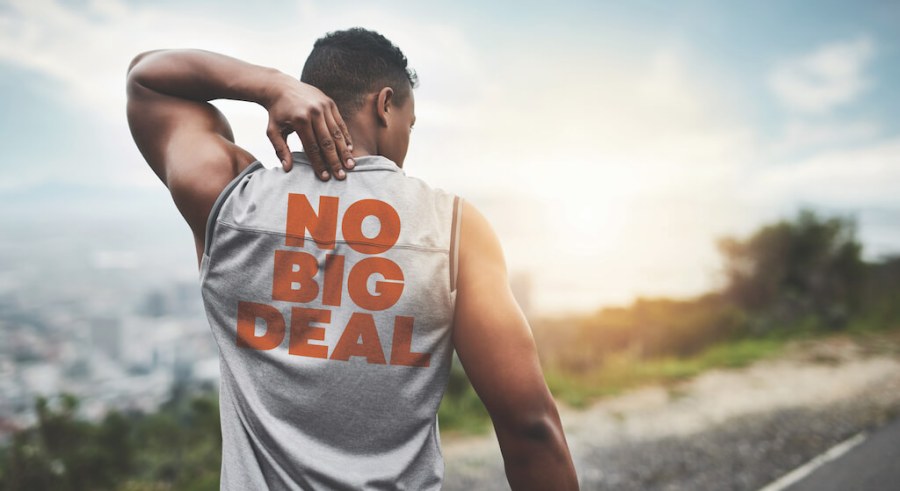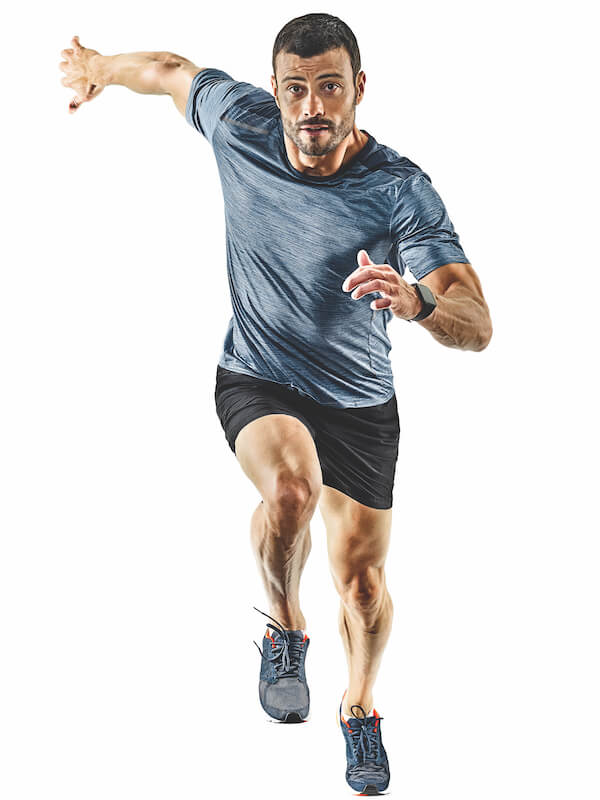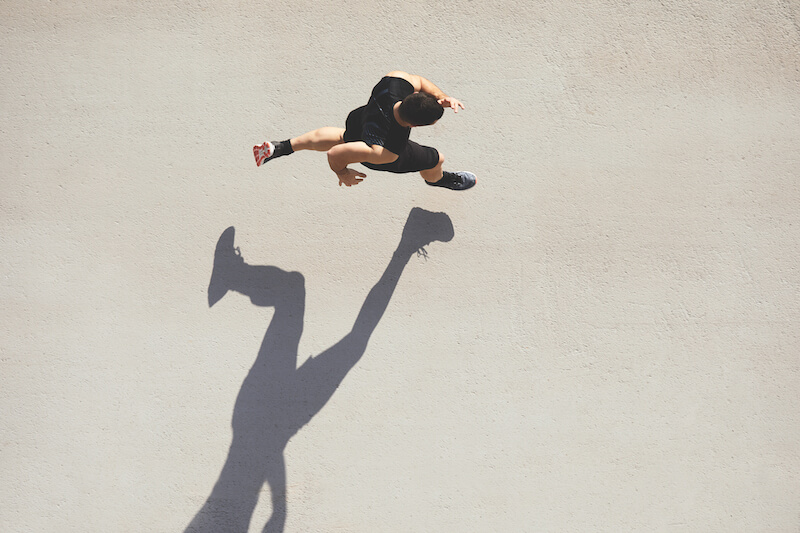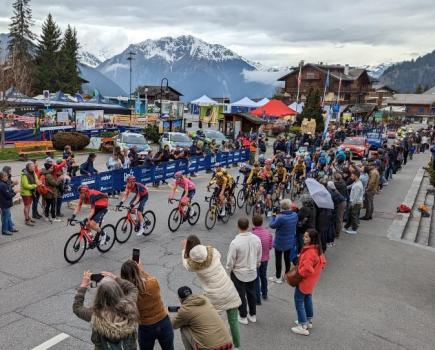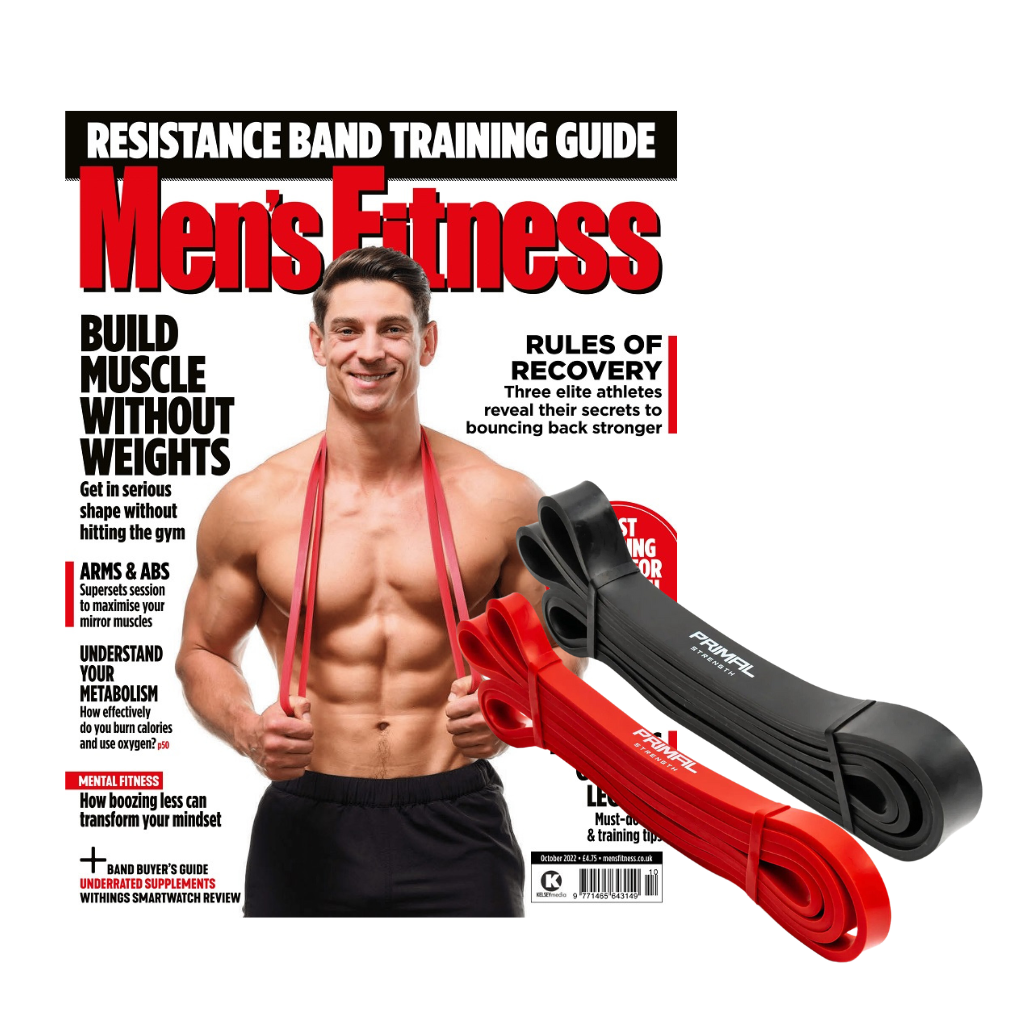Despite the skinny stereotype, running is a sport for all shapes and sizes, so for heavier men who think they’re ‘too big to run’ it’s time to embrace the bulk and jog on.
In blazing heat high on an Austrian mountain, Mark Peart fears he’s getting close to his physical limit. He clambers up to the 2,500m summit – his second of the day – and sits down. He knows he can’t stop here. This is the adidas Infinite Trails event, a team relay race over unrelenting mountainous terrain.
Peart’s 60k leg includes 3,000m of ascent. His teammates are two of his former competitors from Channel 4’s SAS Who Dares Wins. They’re waiting for him at the changeover. Letting them down is unthinkable. But right now he needs to rest. And to eat. He pulls a bag of nuts from his pack, but as he does so another runner appears on the summit. “This guy just looks horrendous,” says Peart. “Much worse off than me. I know I’ve got to help him.”
The last thing he wants to do is give away his precious food, but he ends up taking a mouthful of nuts for himself and pressing the rest of the bag into the exhausted athlete’s hand. This spontaneous act of altruism gives both men a boost and Peart starts running again, going on to complete his section of the race in an impressive time.
View this post on InstagramA post shared by Mark Peart (@mark_j_peart) on
Size isn’t an issue
Peart would be the first to admit he doesn’t look like your typical ultra-running endurance athlete. He’s a big
guy: nearly six-foot tall and 86kg. His fitness regime is a fine balance of road and trail running, cycling and
gym-based resistance work, and there’s no question he’s carrying a decent amount of muscle up top.
He laughs at the contrast between his physique and that of celebrated mountain runner Kilian Jornet, who’s a few inches shorter and a whole 27kg lighter, but Peart feels he’s flying the flag for bigger blokes who want to get involved in endurance-based adventure events.
“I’m not sure I’ve ever felt at a disadvantage,” he says. “I’ve definitely felt overlooked and even judged for the amount of muscle I carry and my physical appearance. I guess that only fuels my desire to prove doubters and the stereotype wrong. So maybe, in actual fact, that gives me an advantage over others.”
Training makes the difference, not weight
Peart believes it’s a myth that to enjoy a tough running event like the adidas Infinite Trails you have to conform to the traditional slim, ‘racing snake’ image of the male runner.
“If we’re talking about competing at the highest level, then yes, slim probably helps,” he says. “But to simply complete endurance events, then no. You can be whatever shape or size you want, as long as your training and your mind is committed.”
There is some science backing him up here. In 2010, researchers looked at 169 men who completed a 100k ultra marathon and the variables which might have affected their finish times. They took into account such factors as upper-arm circumference and Body Mass Index (BMI), but also examined each athlete’s training schedule leading up to the event.
They found that the volume and intensity of their training had a much more significant impact on their performance than their body shape. Put simply, a large athlete who commits to training hard can easily overcome any limitations placed on him by his size.
Running is a sport for all
Of course, Peart’s impressive combination of strength and aerobic fitness, along with the super-tough events he chooses to compete in, represent the extreme end of the running spectrum. He’s keen to point out that any kind of running has something to offer to big men – whether muscular or simply overweight.
Many men who fall into these categories believe that running isn’t for them – they think they’re simply too large. For those feeling self-conscious about even starting to run, Peart has encouraging words: “In the running community, I’ve met people of all different sizes and abilities. One thing is true: you can never judge a book by its cover. I was advised when I started training to leave my ego at the door. Stay in your own zone and don’t focus on where others are at or what they think.”
Focus on your own improvements
This advice is echoed by Dr Carla Meijen, an expert in endurance sport psychology at St Mary’s University in Twickenham. She acknowledges that feeling different to other runners often leads to self-consciousness, which itself can be a barrier to exercise. One way around that is to develop what she calls a “higher quality of motivation”.
Don’t start out by comparing your body to those of other, more experienced runners, is her advice. “Focus on your own progress and identify ways to enjoy running,” she says. “Find ways to make it enjoyable, like turning it into a social activity, listening to music you like, or identifying new running routes in an enjoyable environment.”
Dr Meijen points out that feeling part of the running community is ultimately a great motivator, but no-one, whatever their body shape, gets there straight away. The sense of belonging comes from increased feelings of competence and confidence.
“Self-belief in endurance activities is often developed through incremental increases,” she says. “Focus on how you feel your fitness is steadily increasing: noticing how that 5k run feels like less effort is a good example of how it can be done.”
Patience and practice are key
If you struggle when you start out, don’t despair. Tony Pound, a WeRun coach based in Oxford, says every runner loses faith in themselves at some point in their running journey, particularly early on when people start to question if the struggle is really worth it. Becoming a runner isn’t easy for anyone.
An experienced coach, a club or simply a strong support network of family and friends can be invaluable when your confidence dips. “Try to concentrate on the reason why you started to run in the first place,” he says, “and remember that every master was once a disaster. You will get stronger and you will get faster – it’s a process and you may just need help staying the course.”
For his part, Mark Peart is currently training for the gruelling Ultra X Mexico, a 250k multi-stage race through the the heartlands of the Tarahumara, an indigenous people renowned for their long-distance running abilities.
It’s fair to say that not many of those taking part in the race will have a 190lb frame like Peart’s, but he couldn’t care less. “I’ve always said there’s only two things you need to have a ‘runner’s body’,” he says. “Have a body, then go for a run!”
HIIT IT!
Try WeRun coach Tony Pound’s interval session for bigger blokes
“These workouts are aimed at promoting leg turnover, to get you used to running at speed and into the heart-rate zone that encourages fat burning,” explains Pound.
- Warm-up: 10 min easy jog
- Sprint for 5 secs, rest for 5 secs
- Sprint for 10 secs, rest for 10 secs
- Sprint for 15 secs, rest for 15 secs
- Sprint for 20 secs, rest for 20 secs
- Sprint for 15 secs, rest for 20 secs
- Sprint for 10 secs, rest for 10 secs
- Sprint for 5 secs, rest for 5 secs
- Cool-down: 10 min easy jog
Words: Jim Old

